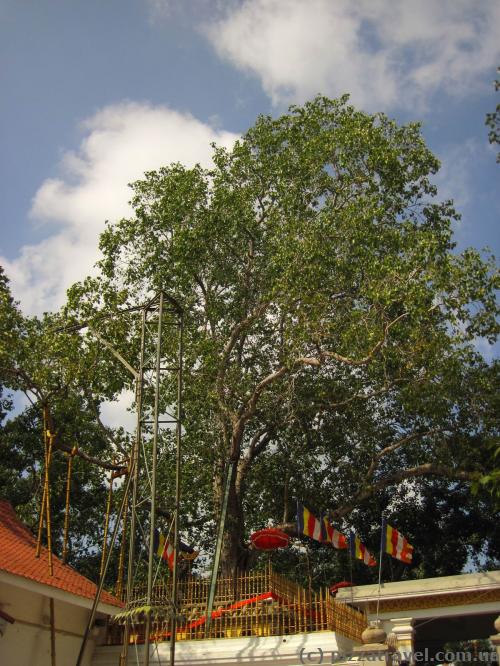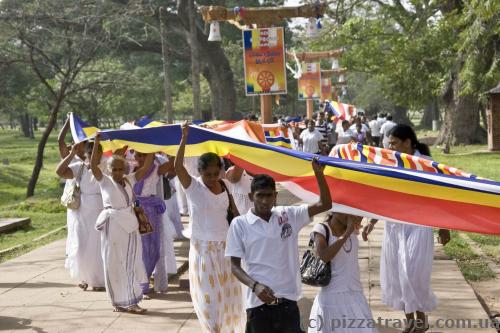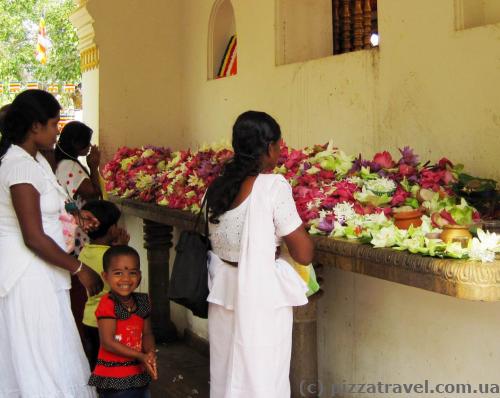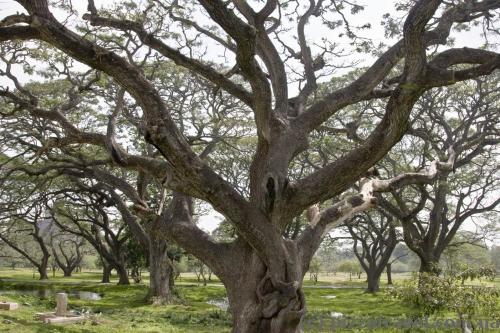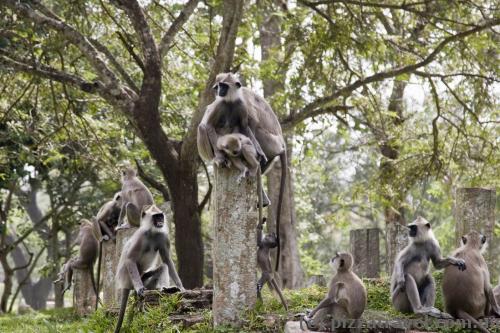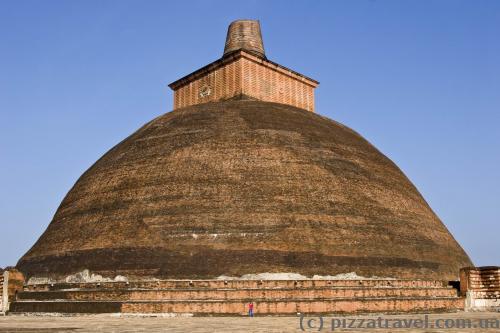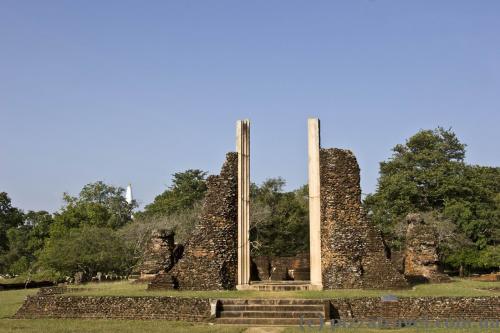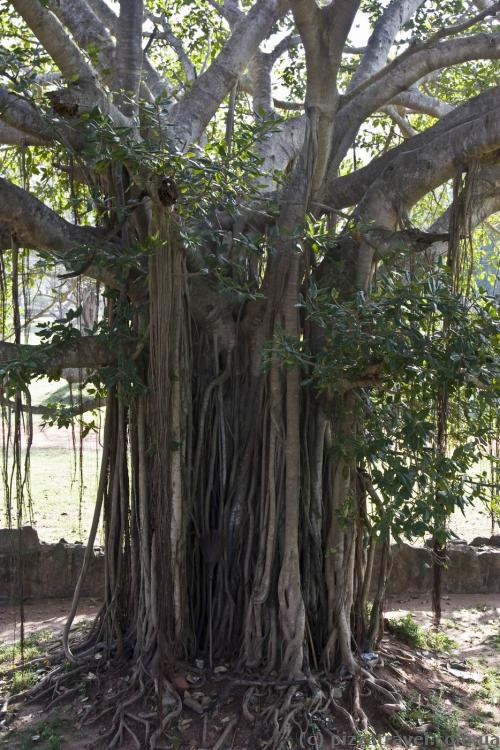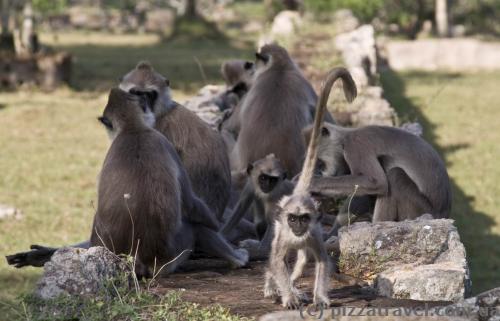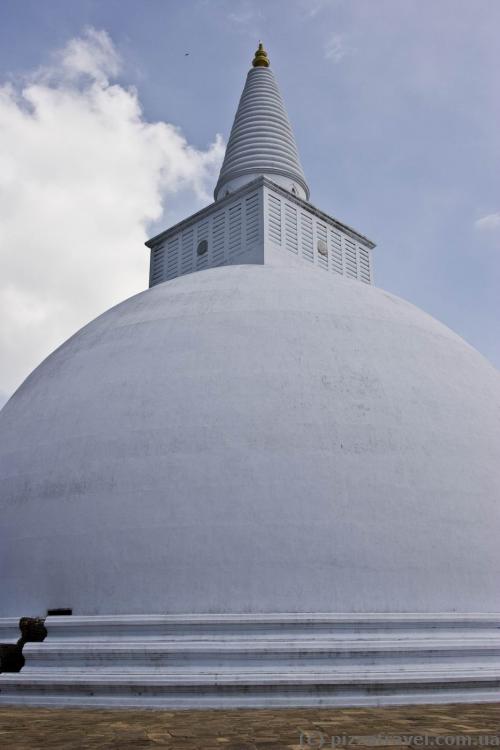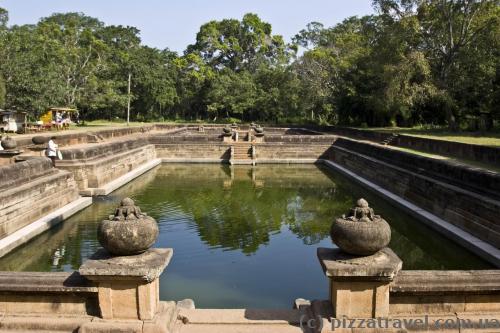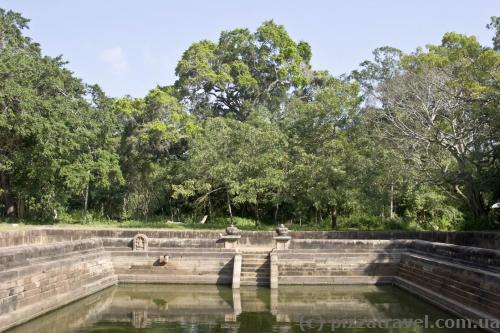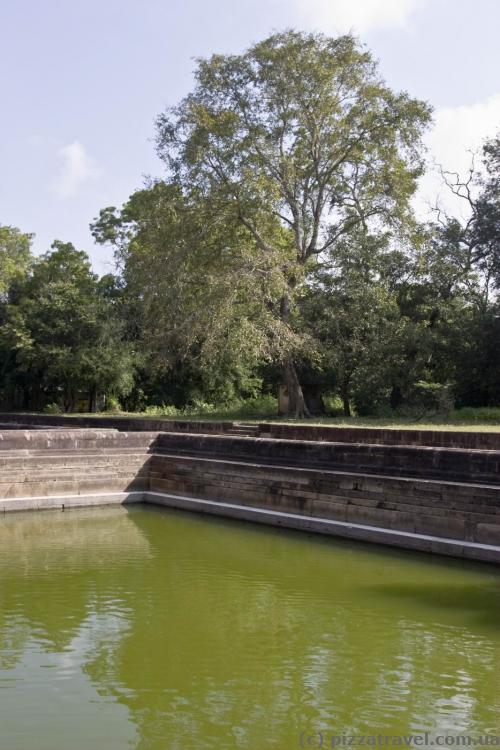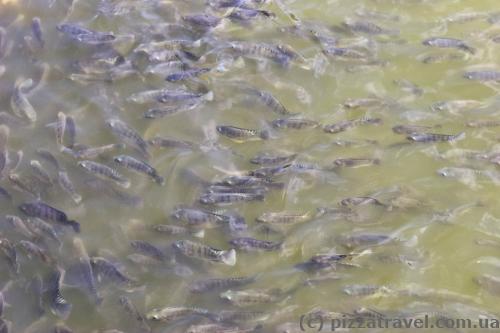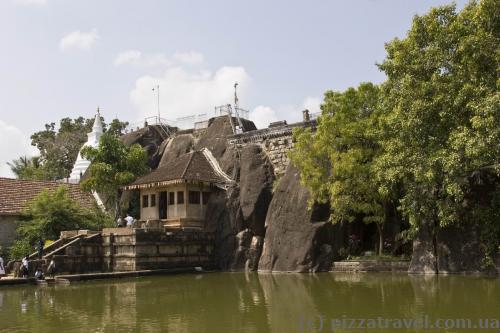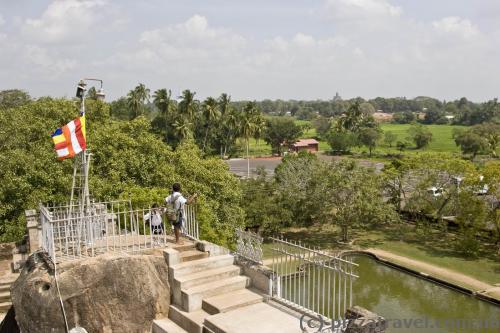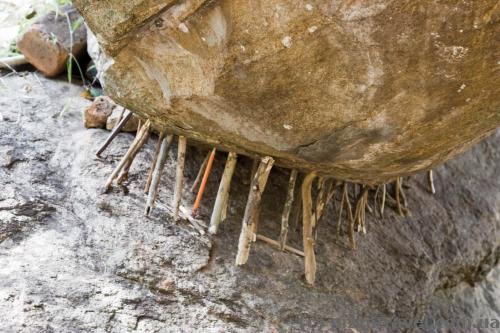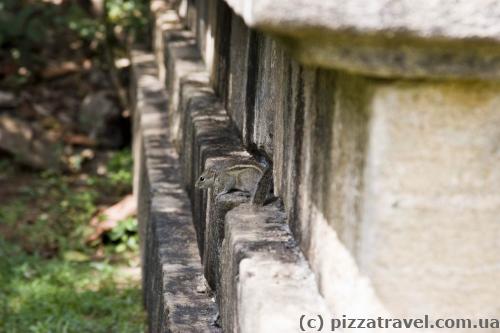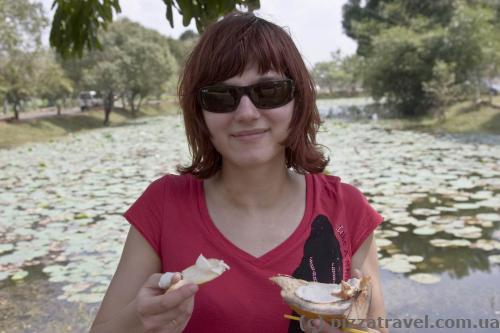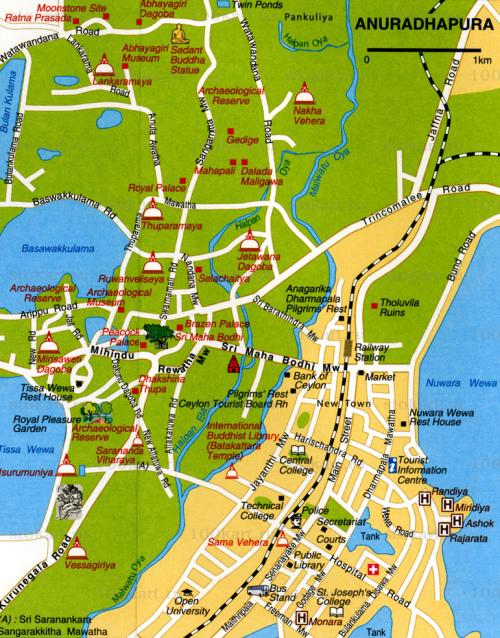Anuradhapura is the ancient capital of Sri Lanka. The settlement was founded in the VI century BC, and in 377 AD the city became the capital. Anuradhapura had lived about 1,400 years with this status until 993, when it was destroyed by the Tamils from southern India. Later rulers of Sri Lanka, who had moved to Polonnaruwa, restored architectural monuments of the city, but Anuradhapura didn't return to its former grandeur and was overgrown by jungle.
Anuradhapura was discovered in 1820 by the British and excavations began in 1912. In the heyday its area was 52 square km and population reached 20-30 thousands of people. The city is located in the north of the island and even now is almost not visited by tourists. But it is very popular among local pilgrims, it is the most sacred place in Sri Lanka with the Bo tree and 7 Dagobas (stupas).
The Bo tree can be found in many places in Sri Lanka, but in Anuradhapura it is unique. In Buddhism, this is a real tree that was grown in Bodh Gaya (eastern India). Buddhist legend tells of Gautama Buddha who attained enlightenment (bodhi) while meditating under the Bodhi tree. The original tree is not preserved, but the tree in Anuradhapura was grown from its seeds in the III century BC.
The biggest surviving stupa is the Jetavana stupa (Jethawanaramaya Dagoba), which is 122 meters high. It is the tallest brick structure in the history of mankind. In the 4th century BC, when it was built, the stupa was the third largest structure in the world after the pyramids of Giza. Curiously, all stupas (even those built in our time) contain small particles of physical remains of Buddha or are built on sites where important religious events took place. Dimensions of the stupa can be evaluated in the next photo, find a human on it :)
Several water reservoirs of the ancient capital were recovered within the city. We visited the twin pools (Kuttam Pokuna), although in fact they have different size. The ancient Sinhalese created a special cleaning system: water passed through the canals with grooves, the dirt settled, and clean water passed to the reservoirs.
We also visited another interesting object - Isurumuniyya Vihara, a small rock temple with ancient paintings, built in the 3rd century BC. There are few tourists there, a lot of chipmunks and a good observation deck at the top of the cliff.
Objects in Anuradhapura are located on a quite large area, so it's not easy to visit all of them on foot. If you are without a car, find a trishaw, just don't overpay. The entrance ticket cost $25 in 2012. Common tickets for several places used to exist in Sri Lanka a couple of years ago, but now they're gone.
Getting there: Distance from Colombo is about 200 kilometers. By car or bus it is covered in 5 hours. Buses depart from the central station of Colombo, Peta. The Colombo - Anuradhapura train also goes 5 hours, some train cars have air conditioning.
